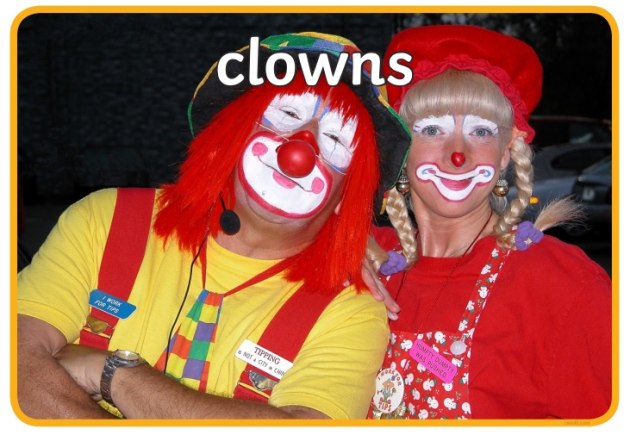Rumored Buzz on All Occasion Performers
Rumored Buzz on All Occasion Performers
Blog Article
Everything about All Occasion Performers
Table of ContentsRumored Buzz on All Occasion PerformersFacts About All Occasion Performers RevealedWhat Does All Occasion Performers Do?The Ultimate Guide To All Occasion PerformersAll Occasion Performers Can Be Fun For Anyone
He specialized in pigs and burros, which he educated and sold to various other clowns. He also presented an act with a trained rhinoceros and is the only person in circus history to offer a tightrope strolling elephant.He was additionally a benefactor that gave generously to many charities and he erected the very first monument to soldiers killed during the Civil Battle - Corporate events Dallas TX. Beginnings of the Auguste characterThere is a commonly informed legend concerning the origins of the Auguste clown. According to the tale, an American acrobat named Tom Belling was performing with a circus in Germany in 1869
The supervisor instantly got in the room. Belling removed running, winding up in the circus sector where he fell over the ringcurb. In his embarrassment and haste to run away, he tipped over the ringcurb again on his escape. The audience shouted, "auguste!" which is German for fool. The supervisor regulated that Belling continue looking like the Auguste.
Excitement About All Occasion Performers
For something, the word Auguste did not exist in the German language till after the character came to be popular. Among the theories of the real beginning is that Belling replicated the personality from the R'izhii (Red Haired) clowns he saw when he toured Russia with a circus (https://www.gaiaonline.com/profiles/all0ccperf0rm/46717194/). Characters like the auguste definitely existed previously

The dance later came to be referred to as tap dancing. It ought to be kept in mind that there are alternate 'beginnings' for the vagrant personality"among which was the taking a trip "hoe boys," or travelling farm workers, who rode the rails from one town to one more, cleaning the soot far from their eyes & mouth.
Some Of All Occasion Performers
Keep in mind that the scare wig, overstated lips and eyes, extra-large clothes and props of the American clown, props such a soda water, packed clubs, blowing up cigars, and whistles loaded with residue, are not Grimaldi's. They belong to Tambo and Bones. The English blackface comedian Charles Mathews concerned America in 1822 to execute and examined black life and custom-mades.
Nobody knows where the mummers' plays and Morris dances came from. In such plays there is a combination of personalities including "kings" and "saints", cross-dressing, and blackface functions; the faces of Morris (or "Moorish") dancers were also smudged. The mummer's plays were not for fun. The majority of were performed by paupers in the starving time after Xmas.
If rejected, they would plow the offender's yard. The Derby Play of the Tup was done for food and beer by unemployed young people. This usage of blackface for political action disguised as enjoyment continued America when the offspring of these men smudged their faces to oppose tax obligations. One such protest has entered American history as the Boston Tea Ceremony.
Not known Factual Statements About All Occasion Performers

While not the lush events we believe of today, some early, rougher forms of traveling circus were popular in America from Revolutionary times-- George Washington was a follower. Blackface clowns executed in them from a minimum of the 1810s and maybe before; they were a staple by the 1820s. The wide red or white mouth repainted on by modern-day clowns is a remnant of the blackface mask.
In several respects minstrelsy was born when these performers moved their acts from the tent to the stage of American range cinemas. Absolutely there was a strong aspect of clowning in minstrelsy. The blackface mask was a clown's disguise, exaggerating the facial features right into a cartoon, a caricature. The blackface clown may be the precursor of today's anodyne circus clown, yet or else both are as contrary as blackface and whiteface.
The Ultimate Guide To All Occasion Performers
That in nineteenth-century America was even more of an Aside from the Negro? What much better mask than blackface? In numerous practices the clown would certainly show some physical defect, like a hunchback, dwarfism-- or like Jim Crow, lameness - Face painters near me. And because he was different, an Others, the clown was allowed to state and do things no one else could.
Satire and parody were central to minstrelsy. It's fascinating that in the West African cultures where most servants came, the poet-singer griot offered the same satirical jester feature when the celebration emerged. That might have something to do with the curious (to us, recalling) simplicity with which Southern Blacks accepted not just the music however also the demeaning humor of minstrelsy.
Emmett Kelly was the ideal understood vagrant clown with his personality "Fatigued Willie."Vagrant clowns are competent: + jugglers + illusionists + pianists + chalk talk musician + cyclists.
Report this page